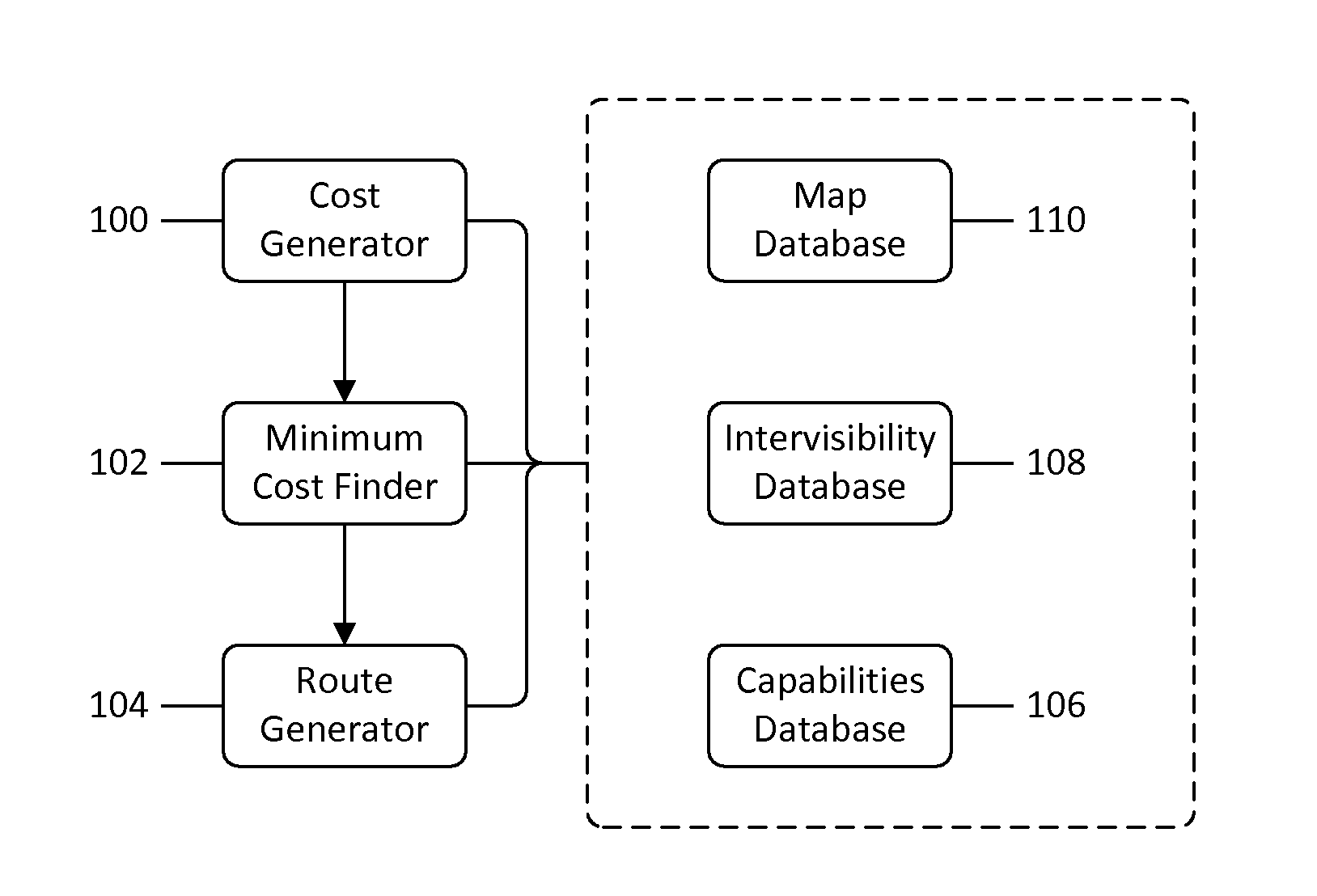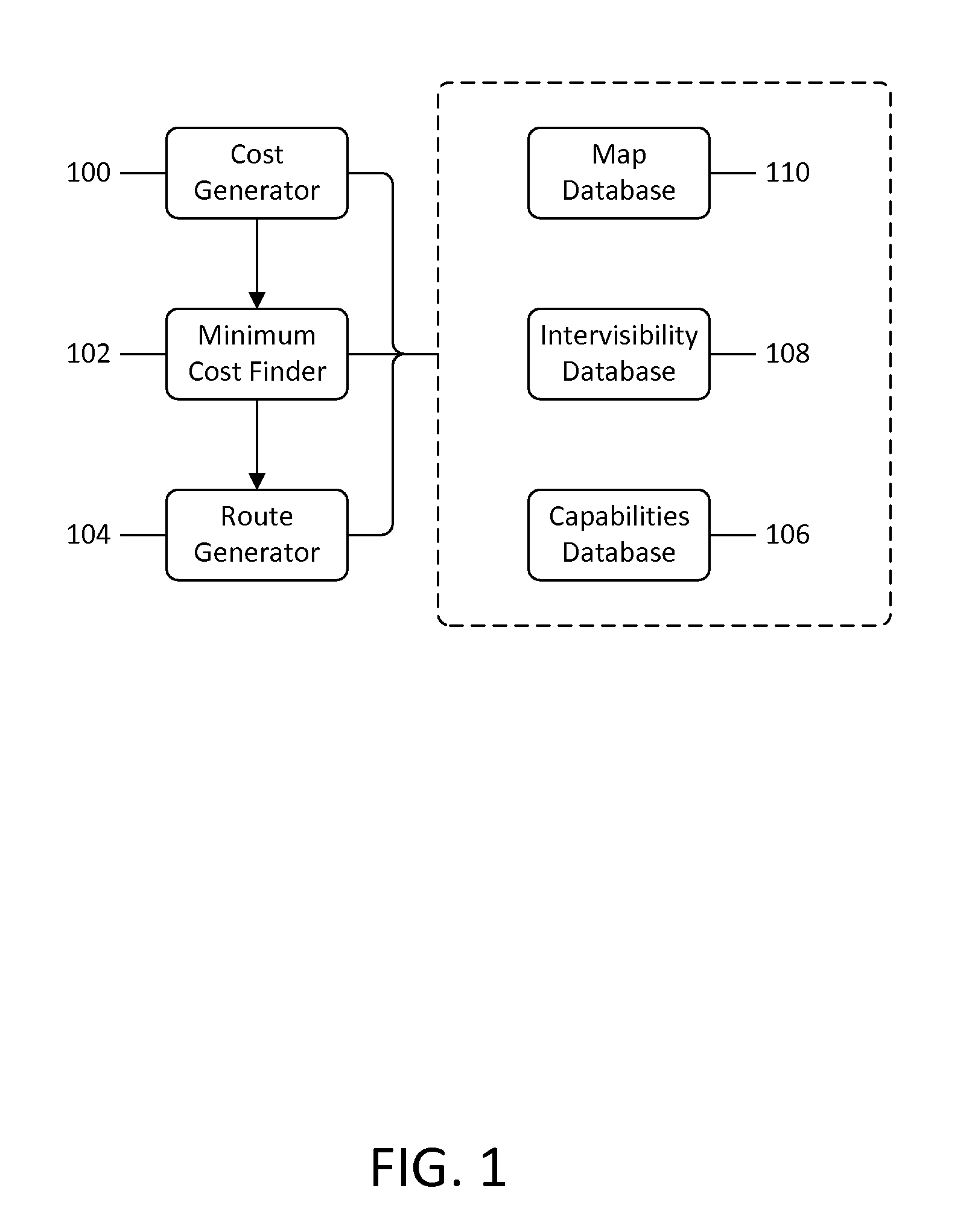System and method for generating tactical routes
a technology of tactical routes and systems, applied in surveying, navigation, instruments, etc., can solve the problems of not being good enough, not being able to guarantee that the intelligence used to plan the route has not changed drastically, and requiring great effort to achieve the effect of maximizing any advantages in weapons range, and minimizing the amount of new terrain
- Summary
- Abstract
- Description
- Claims
- Application Information
AI Technical Summary
Benefits of technology
Problems solved by technology
Method used
Image
Examples
Embodiment Construction
[0041]An exemplary embodiment for generating tactical routes is one that minimizes the path's intervisibility union while meeting speed constraints by avoiding slow terrain. By minimizing the path's intervisibility union, travelers are exposed to a minimal amount of previously-unexposed terrain after beginning travel, thereby reducing the risk of encountering enemies in unexposed terrain. By avoiding slow terrain below an arbitrary threshold, travelers can travel at or above the speed threshold at every node on the path, rendering it difficult for enemies to engage the traveler in combat.
[0042]Referring now to the drawings, FIG. 1 illustrates the system's main components of the exemplary embodiment for generating routes that minimize the path's intervisibility union while meeting speed constraints by avoiding slow terrain. The Cost Generator 100 uses speed and visibility information to create a blended cost grid for generating tactical routes. The Minimum Edge Cost Finder 102 search...
PUM
 Login to View More
Login to View More Abstract
Description
Claims
Application Information
 Login to View More
Login to View More - R&D
- Intellectual Property
- Life Sciences
- Materials
- Tech Scout
- Unparalleled Data Quality
- Higher Quality Content
- 60% Fewer Hallucinations
Browse by: Latest US Patents, China's latest patents, Technical Efficacy Thesaurus, Application Domain, Technology Topic, Popular Technical Reports.
© 2025 PatSnap. All rights reserved.Legal|Privacy policy|Modern Slavery Act Transparency Statement|Sitemap|About US| Contact US: help@patsnap.com



